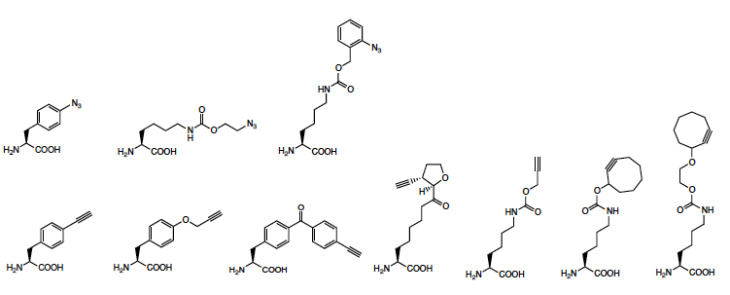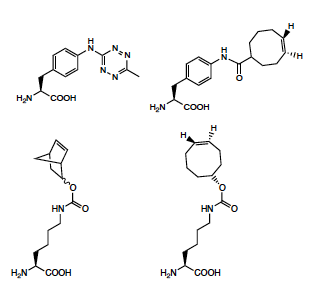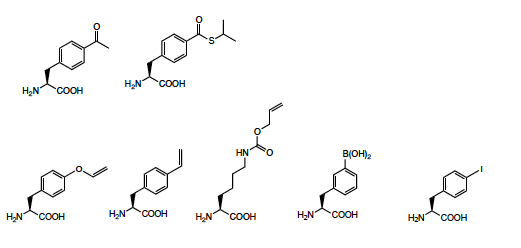Protein labeling
Protein labeling
Labeling of proteins in vivo and in vitro is an easy way to install a variety of probes (NMR, IR, radioactive, fluorescent, spin label etc.)
The most abundant ncAA for labeling contain azide or alkyne functionalities (Figure 1) that react in a Huisgen cycloaddition which can be accelerated at room temperatures using a copper catalyst. Faster reaction rates can be achieved without catalyst using the tetrazine/strained alkene cycloaddition reaction (Figure 2). While this bioorthogonal ligation reaction works well in live cells the amino acids and labeling reagents are not as abundantly available compared to the functionalized azides and alkynes.
Figure 3 shows a variety of miscellaneous ncAA that have been shown to participate in other types of labeling reaction or forms of protein engineering.

Figure 1. Alkyne and azide ncAA used in Huisgen cycloaddition bioorthogonal ligations.

Figure 2. Tetrazine and strained alkene amino acids
